I've been informed by national security that back-room discussions on a PDGC thread are in the works. As a result, I'm freezing this one.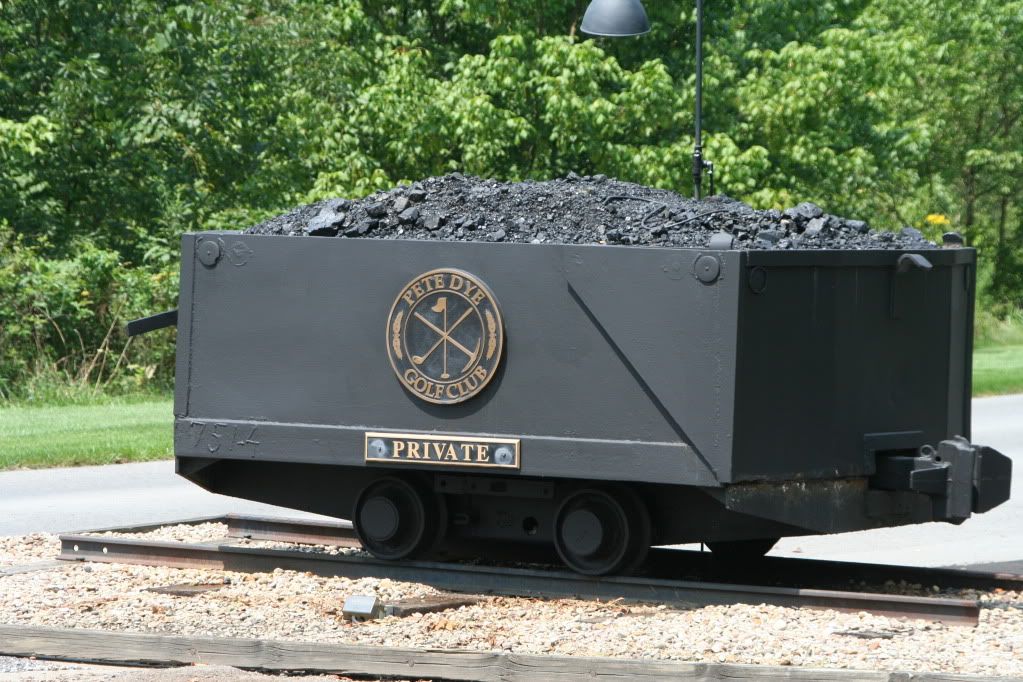
This was the first national golf club that I saw. Since my conversion to GCA, I was looking at different elements, but not to the degree that I do today. I haven't looked at these images in a while, so who knows what's in the hopper. Pete Dye GC certainly has an extended-build history. It is located in Bridgeport, West Virginia, very close to I-79 and quite accessible. The build began in 1978 and was finished in 1995. It didn't take that long to blast through the coal. There is a nice semi-local piece on the club here:
http://www.huntingtonquarterly.com/articles/issue41/golf.htmlThe club was in the process of being sold when I was there around 2010. It now is part of the Pacific Links group of course (
https://www.pacificlinks.com/petedye) with all the amenities that come with club membership. There are cabins on the course and a pretty cool clubhouse that we may or may not have had a beer in after the round.
All around the course are tributes to the areas mining history. Copper creek here, coal tunnel there, coal cars here, mining equipment there. Since it comes with an element of infrequency, it doesn't bother you in the manner it would if it were an every-hole, museum tour. As acknowledgements go, it's proper in my estimation.
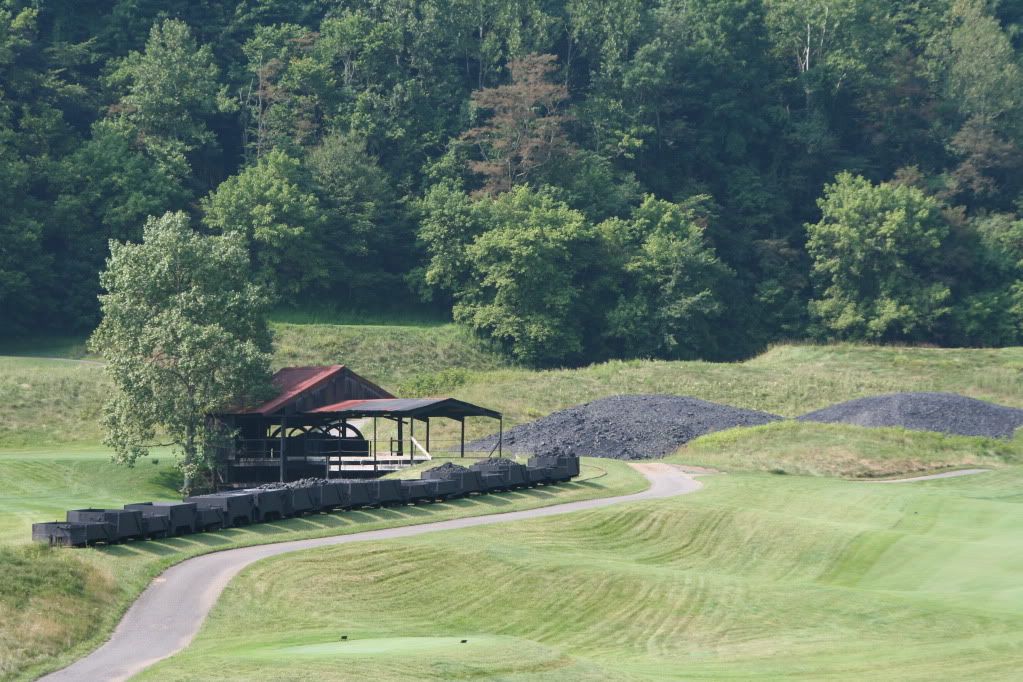
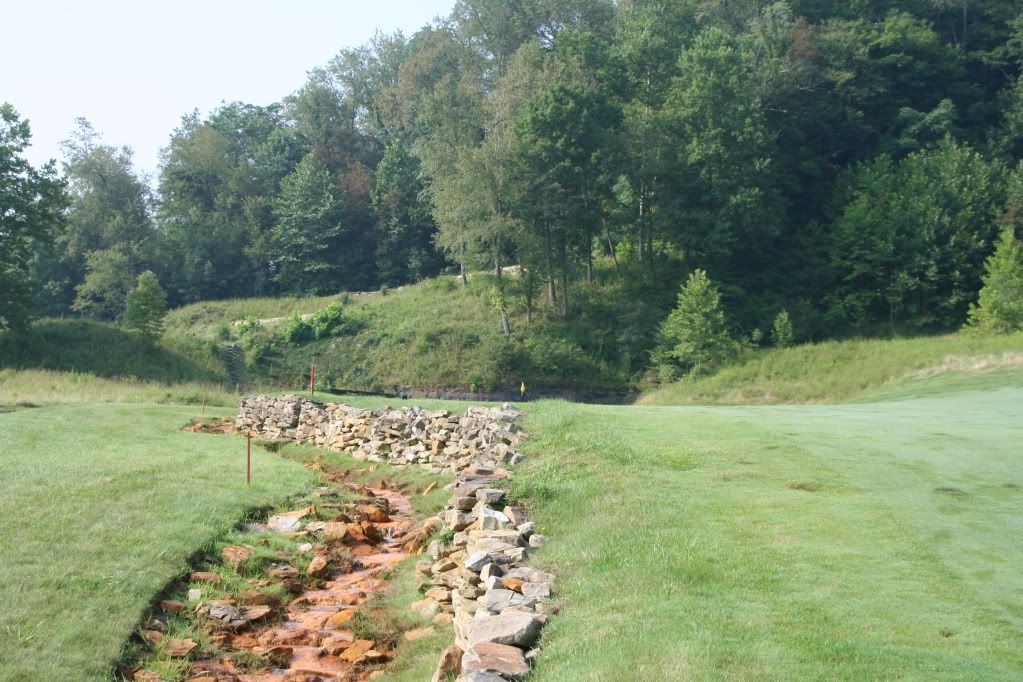

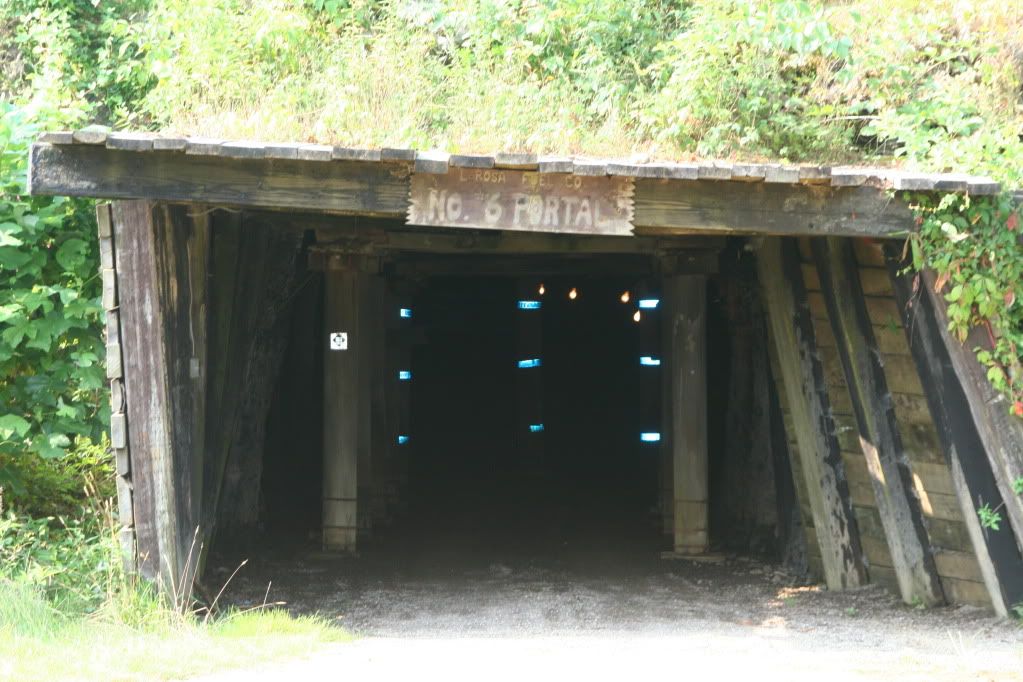
So here goes with the tour, photos circa 2010.
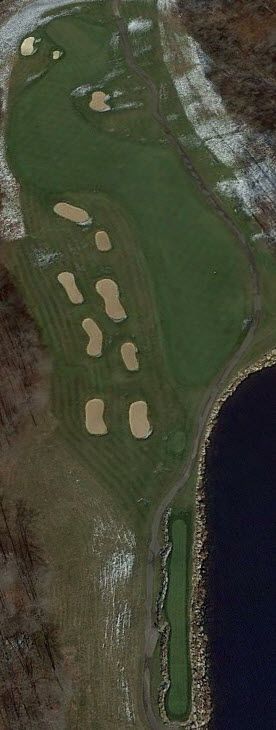 First hole is a manageable par four, measuring 390-375-360-322-283 from the five tee decks.
First hole is a manageable par four, measuring 390-375-360-322-283 from the five tee decks. The two-shot dalliance is a slight bender to the left. Behind the tee, you see the clubhouse across a pond. Ahead you see a series of bunkers down the left, pushing you over a hill to center-right, where the fairway lingers. Advice is to avoid that left side, as you'll be bunkered below fairway level, hitting a shot toward an unseen green.
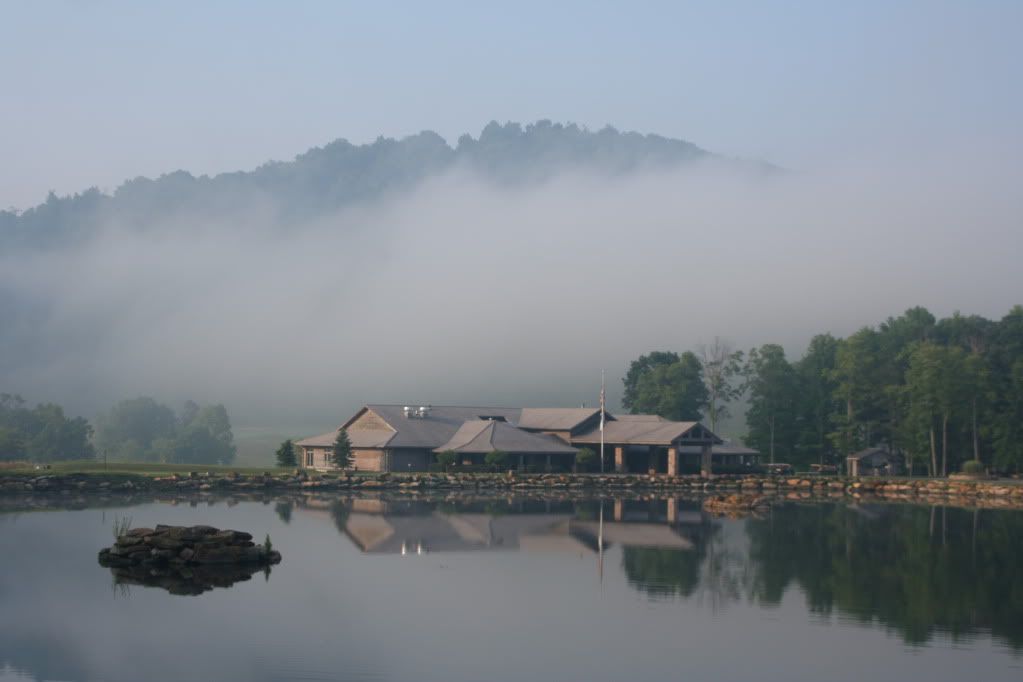
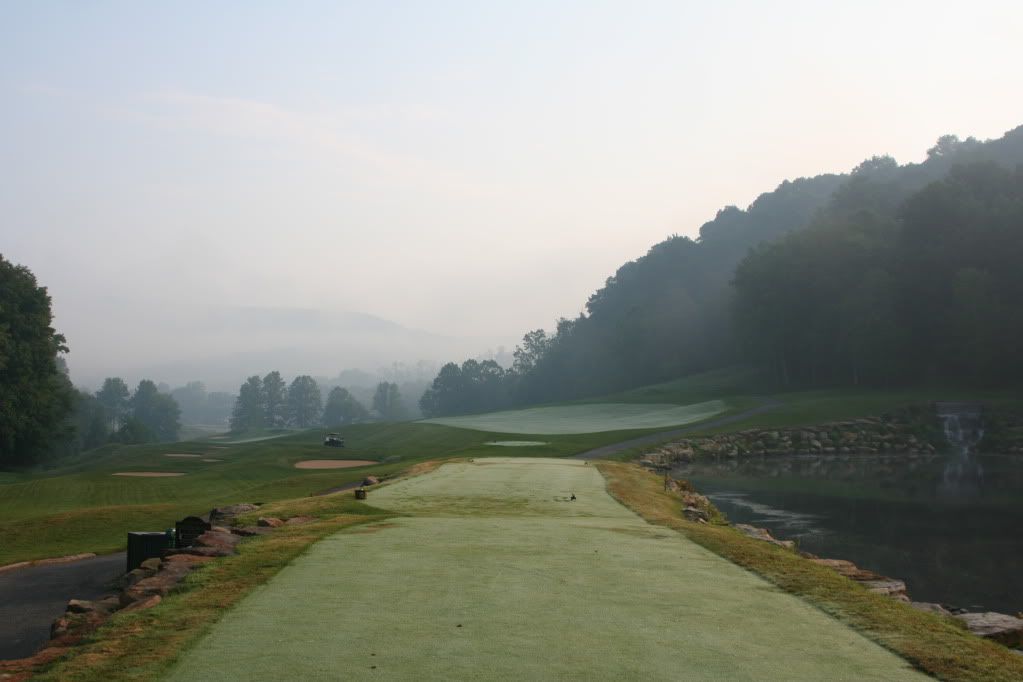
What lies ahead is a double-dogleg fairway. I presume that long hitters might carry all the bunkers left, finding the lower fairway and wedge to the green. The majority of us stay safely right and come in with a long to mid iron. From my recollection, the upper fairway slopes downward and slightly to the left, a friendly accomodation.
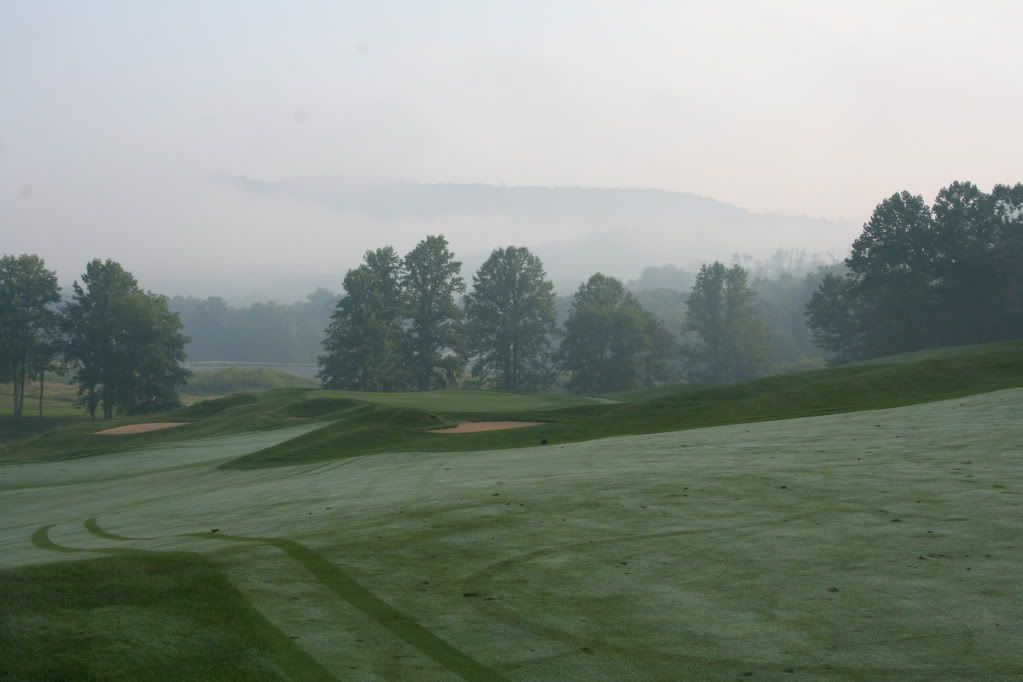
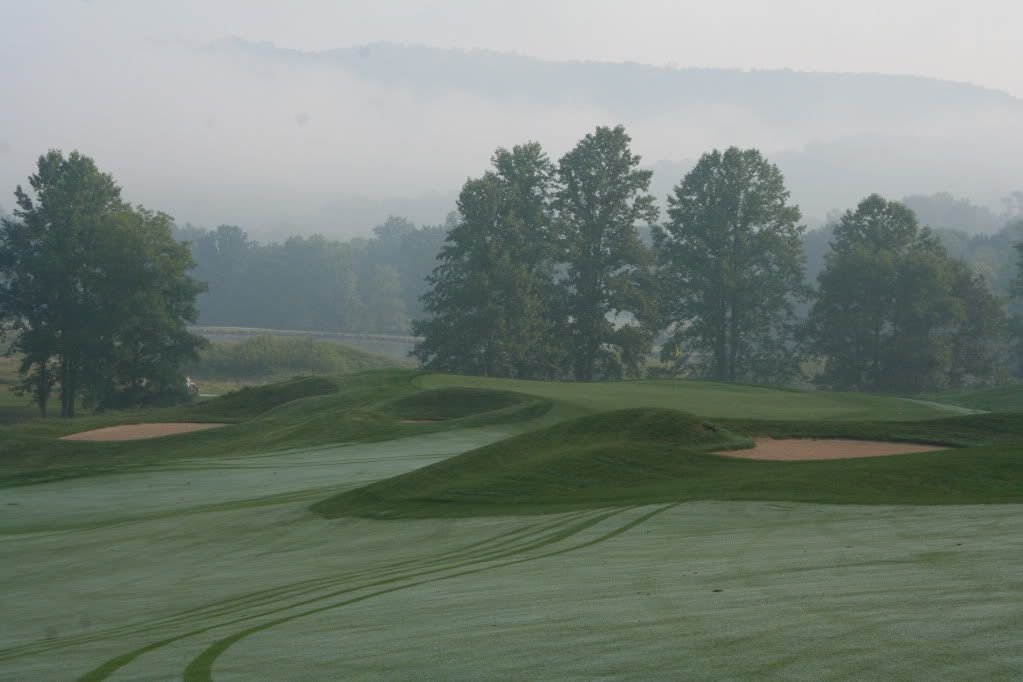

From these last three images, you have a sense of the look of the hole from each vantage point. You're never quite in possession of the entire trace as a whole, so having the overhead image helps to consolidate matters. I suspect that multiple playings would reveal multiple avenues of approach, a hallmark of an interesting, worthwhile course.
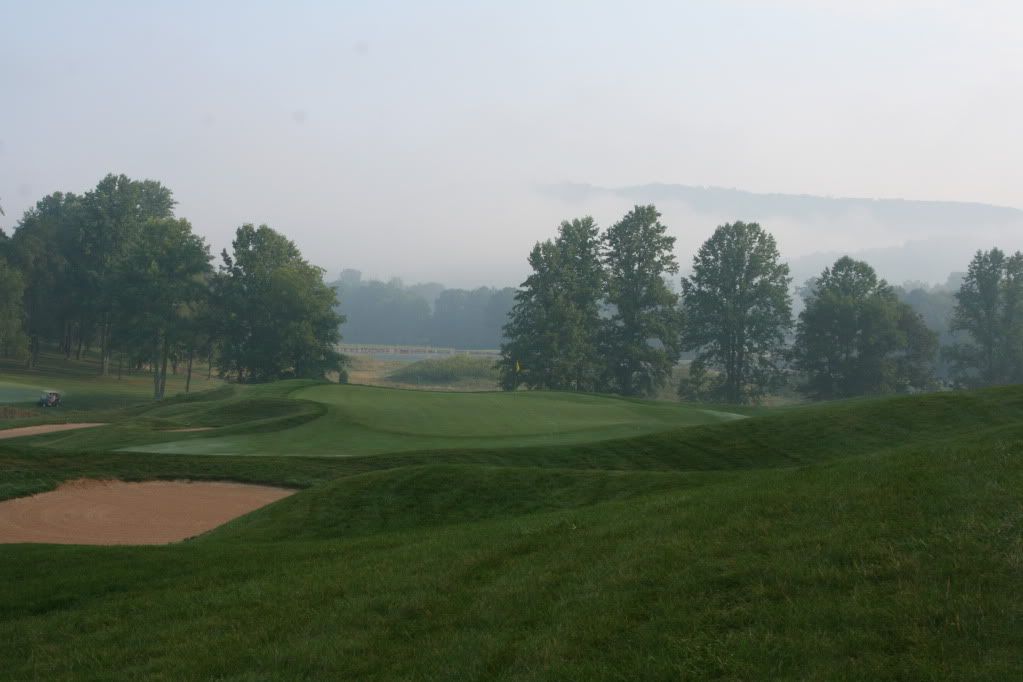

In deference to the multiple trips that the Dyes made to Scotland, Pete gives you that all-important run-up to the green from high right. The aerial game at times wins the day at Pete Dye Golf Club, but not always. Here, you have options. Although there is a bunker adjacent to the green on the left side, it is utterly avoidable.
The green is divided nicely: low front left; a bit higher but still low front right; separating, angled spine; dangerous back left and semi-dangerous back right. A look back affirms the decision to come this far to play this course. The next look you'll have begs the question, is this paradise?